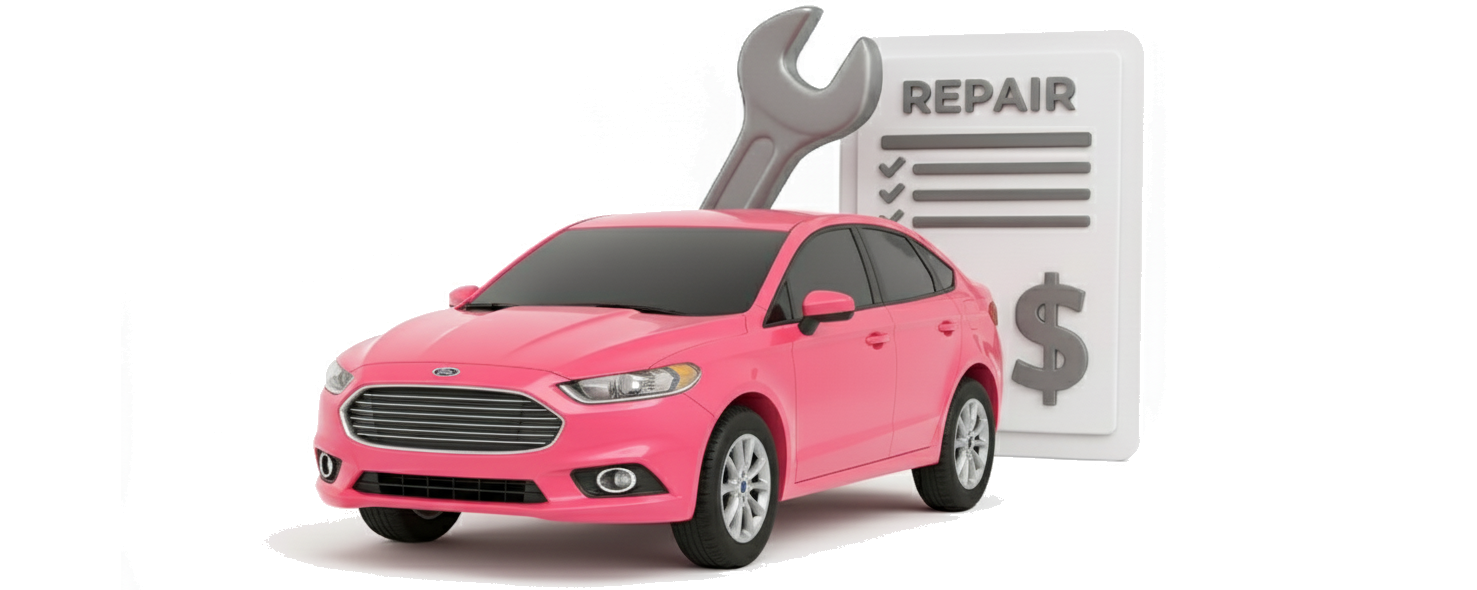Brake hoses are often overlooked in routine maintenance, but they’re one of the most critical components when it comes to stopping safely. A $200 repair today could prevent a potentially dangerous brake failure that costs much more in the future.
While your repair price varies depending on a few specifics, it’s important to get the work done promptly. When a brake hose begins to fail, it can lead to a spongy brake pedal feel, or even a total loss of braking pressure that creates a very unsafe situation.
Real customers use Jerry for repair quotes
The price range for a brake hose replacement can vary based on your specific car, location, and parts used. But Jerry makes it easy to see what others are paying right now. Here are some examples of customers we’ve helped find the very best prices for their brake hose repairs.
Estimates are modeled based on real vehicle and location data; names have been changed. Actual prices will vary by shop, parts, and vehicle condition.
Use Jerry to help you find the exact price for your car, location, and parts.
Why do brake hose costs vary?
Brake hose quotes jump around based on what’s on your car, its condition, and the steps needed for a firm, safe pedal. Jerry helps customers compare apples-to-apples by standardizing parts, labor hours, bleeding needs, and any rust-related line repair—so you see where the number really comes from.
Parts: OEM-style rubber $19–$48/ea; DOT/FMVSS 106–approved braided stainless $60–$150/ea.
Design & hose count: Some trucks/SUVs add a center rear hose; tight routing/heat shields increase time.
Bleeding needs: ABS/ESC may require a scan-tool bleed (+0.3–0.8 hr).
Rust/seized fittings: Rounded flare nuts or cracked steel lines can require on-the-spot line repair (+$50–$200+).
What does a brake hose do?
A brake hose is the short, flexible tube that carries pressurized brake fluid from the car’s hard brake lines to the brakes at each wheel. It must hold very high pressure without leaking while bending as the suspension moves and the wheels turn. Most cars have one hose per wheel.
The factory standard is reinforced rubber; performance or heavy-duty vehicles may use braided stainless steel hoses, which resist swelling under pressure. Over time—especially if brake fluid isn’t serviced and absorbs moisture—rubber hoses can crack, soften, swell (“balloon”), or collapse internally. That can make the brake pedal feel soft or inconsistent and can lengthen stopping distances, which is a safety risk.
If you notice changes in pedal feel, see cracking or damp spots, or the hoses are simply old, have them inspected and replaced.
Symptoms of a failing brake hose
Know the signs of an brake hose failure. Here’s what Jerry has found you should look out for, from helping real drivers diagnose their car issues:
Spongy or soft brake pedal: If pressing the pedal feels mushy or travels toward the floor, a hose may not be sealing properly.
Visible cracks or bulges: Rubber hoses should look smooth and solid. If you see cracking, blistering or fluid buildup near the fittings, that hose is past due for replacement.
Brake pulling or dragging: A collapsed hose can allow fluid in, but not back out. This traps pressure in the caliper and causes brake drag.
Uneven brake pad wear: When one caliper responds slower than others, it may wear pads unevenly.
Brake fluid leaks near wheels: If a dripping puddle of fluid is found behind a wheel or around a caliper, inspect the hose fittings immediately.
Your action plan: Get the repair done right
Brake hose quotes jump around based on what’s on your car, its condition, and the steps needed for a firm, safe pedal. Jerry can help you gather multiple shop quotes so you can compare apples-to-apples before you book.
- Safety first: Tow it if the pedal is soft/sinking, there’s fluid at a wheel, or a brake is dragging; otherwise drive carefully to your appointment.
- Get 2–3 written, out-the-door quotes specifying hose type (OEM rubber vs DOT braided), labor hours, whether ABS bleed is included, line-repair policy/pricing, and warranty.
- Choose scope smartly:
- Age/cracking: replace pairs or all four + full fluid flush.
- Isolated damage: a single hose is fine after routing/clip inspection
- Aftercare: look for damp spots 24–48 hrs; red flags = reusing crush washers or skipping ABS bleed without a solid OEM reason.
Up on the lift, brake fluid was dripping from a front wheel. The caliper had been flipped the wrong way when reinstalled, which twisted the rubber brake hose until it rubbed a hole in itself and leaked. The pads were also backward—metal side against the rotor—so the new rotor and the hose were both damaged. That $20 set of pads ended up costing about $350 more in parts and labor.

Related repairs
If one brake hose has failed due to age, the others are likely close behind. Most shops recommend replacing all four hoses together if the vehicle is over 10 years old.
When replacing a brake hose, your shop may also recommend additional services or parts to cut down on overall labor costs, including:
- Brake fluid flush: $70–$120 if the brake fluid is dirty or contaminated.
- Metal brake line repairs: $50–$200+ if the hose fitting is seized or the line cracks during removal, or if new tube nuts and line mending must be performed.
- Brake pad or caliper inspection: $148–$216. If one corner has overheated or dragged, you may need further brake work. The repair facility may offer to look for free while the wheels are off.
Jerry recommends: Consider upgrading to steel braided steel hoses if you’re towing frequently, driving in mountainous areas, track racing or living in a region that experiences extreme heat or cold.
Is it safe to drive with a bad brake hose?
No. Even if the brakes seem to be working, a weakened hose can rupture under emergency braking. A collapsed hose can also apply the brake slightly, leading to brake fade, pulling or overheating without warning.
Some drivers ignore early signs like brake drag or a soft pedal only to end up with a complete loss of braking on one wheel. If that happens at highway speeds, the result is incredibly dangerous and potentially deadly.
Pro tip: Overfilling the reservoir before starting gives some time to cap off the leaking line once the brake hose is removed. Work on one hose at a time and never let the reservoir go dry. And always use new copper washers (if applicable) and properly support the hose with factory clips.
What our customers are asking us
-
Can a brake hose fail without leaking?
-
Can I replace a brake hose myself?
-
How can I tell if the brake hose is the problem or the brake caliper?
-
How long does it take to replace all four brake hoses?
-
Is it safe to drive with a bad brake hose?

Jerel Lawrence is an experienced and certified automotive technician with a strong foundation in diagnostics, repair and technical mentorship. A graduate of NASCAR Technical Institute in 2010, Jerel began his career at national automotive repair chain locations, where he earned eight certifications from the National Institute for Automotive Service Excellence (ASE).
From 2017 to 2022, he worked as a General Motors-certified technician at a Cadillac dealership, refining his skills in manufacturer-specific diagnostics and service procedures. Today, Jerel leads as the senior technician and mentor at a family-owned repair facility, where he helps guide the next generation of technicians while ensuring top-quality service.
In addition to hands-on work, Jerel contributes to the automotive community through writing detailed articles and answering technical questions to help vehicle owners better understand and care for their cars.

Everett Cook is an award-winning journalist and editor with more than 10 years of experience across a variety of industries. In editing for Jerry, Everett’s mission is to help readers have a better understanding of the costs of owning or leasing a car and to better understand their vehicle in terms of insurance and repairs. Prior to joining Jerry, Everett was an editor for Axios. His previous work has been featured in The New York Times, The Los Angeles Times, The San Francisco Chronicle, The Atlantic, Atlantic Re:think, The Boston Globe, USA Today, and others. He’s also been a freelance writer and editor with experience in SEO, audience building, and long-term content roadmaps. Everett is a proud graduate of the University of Michigan.








